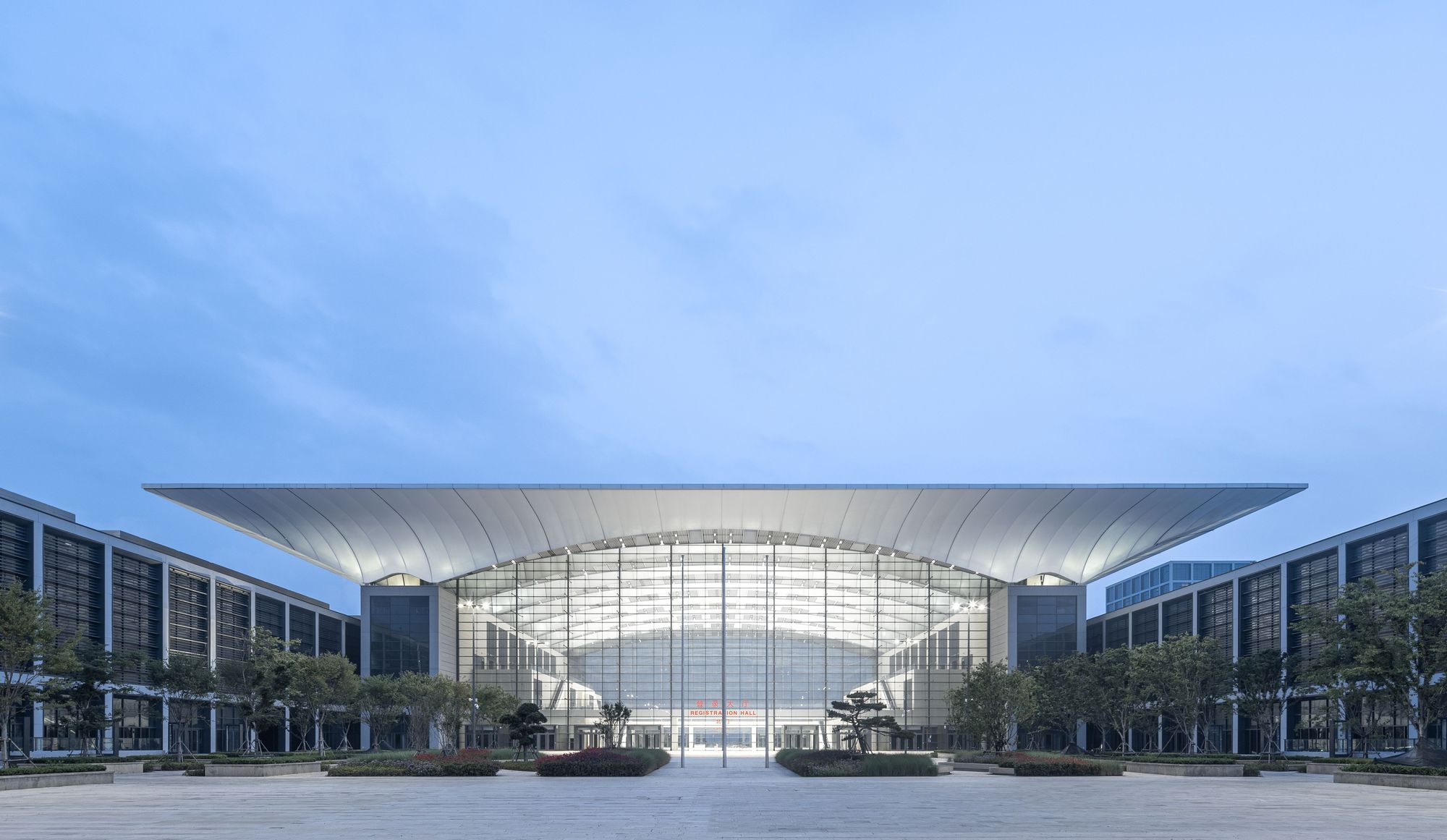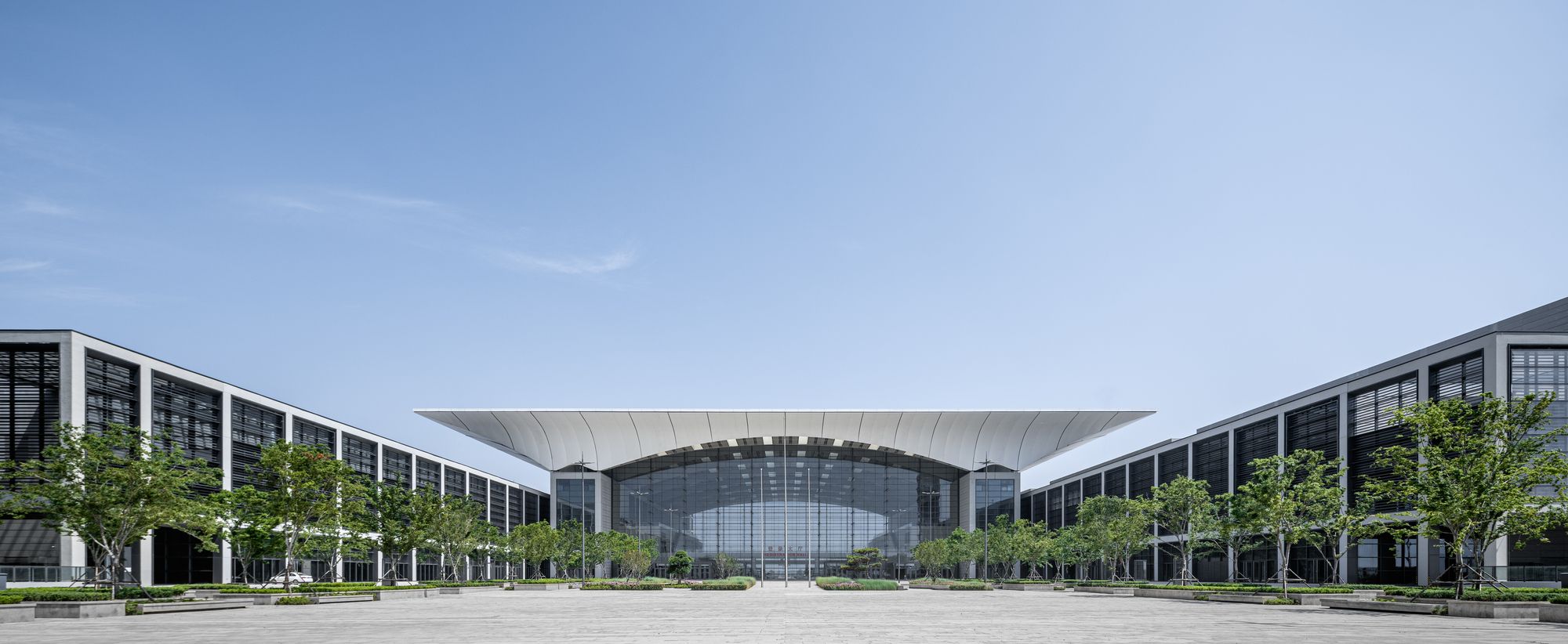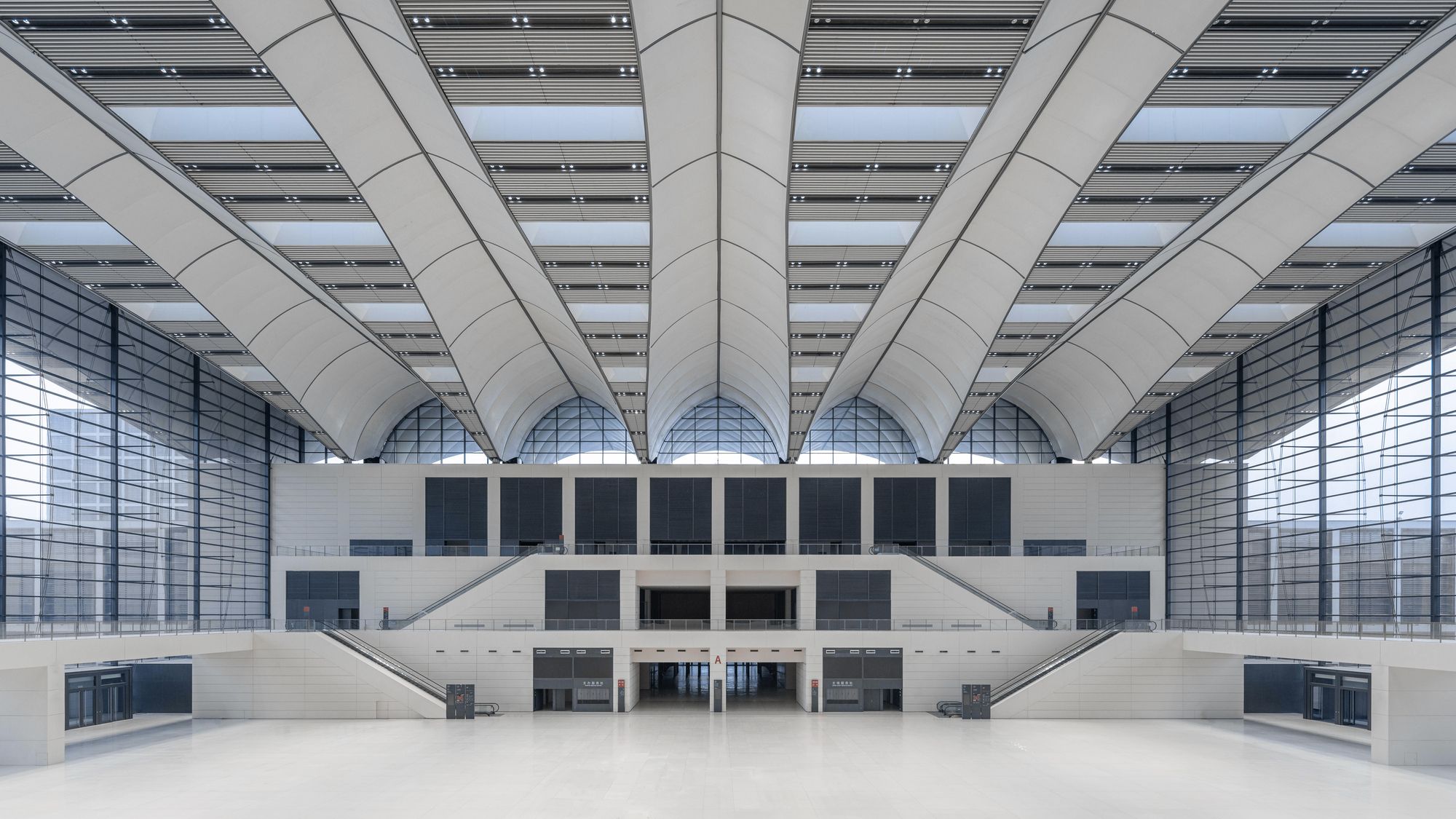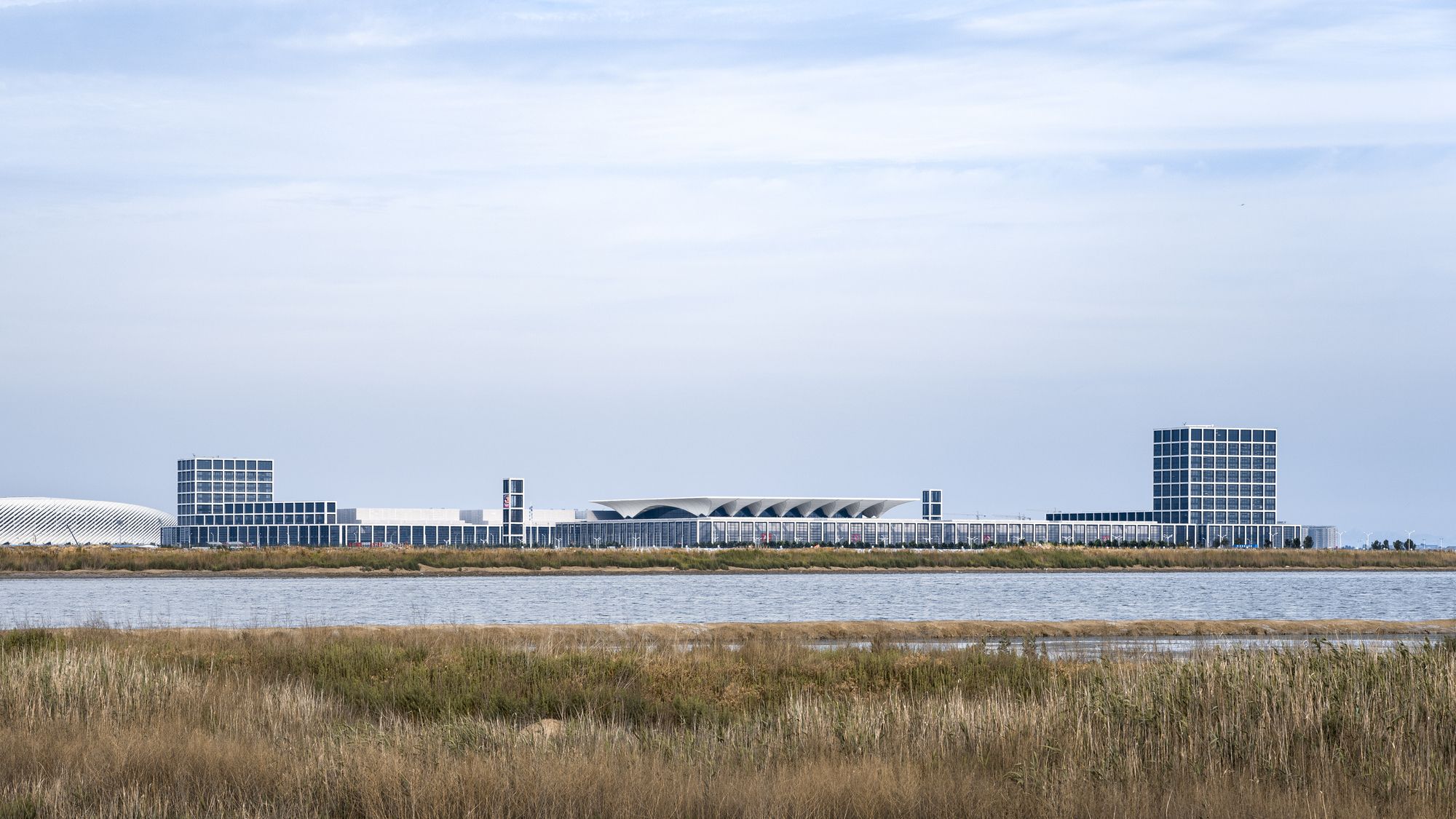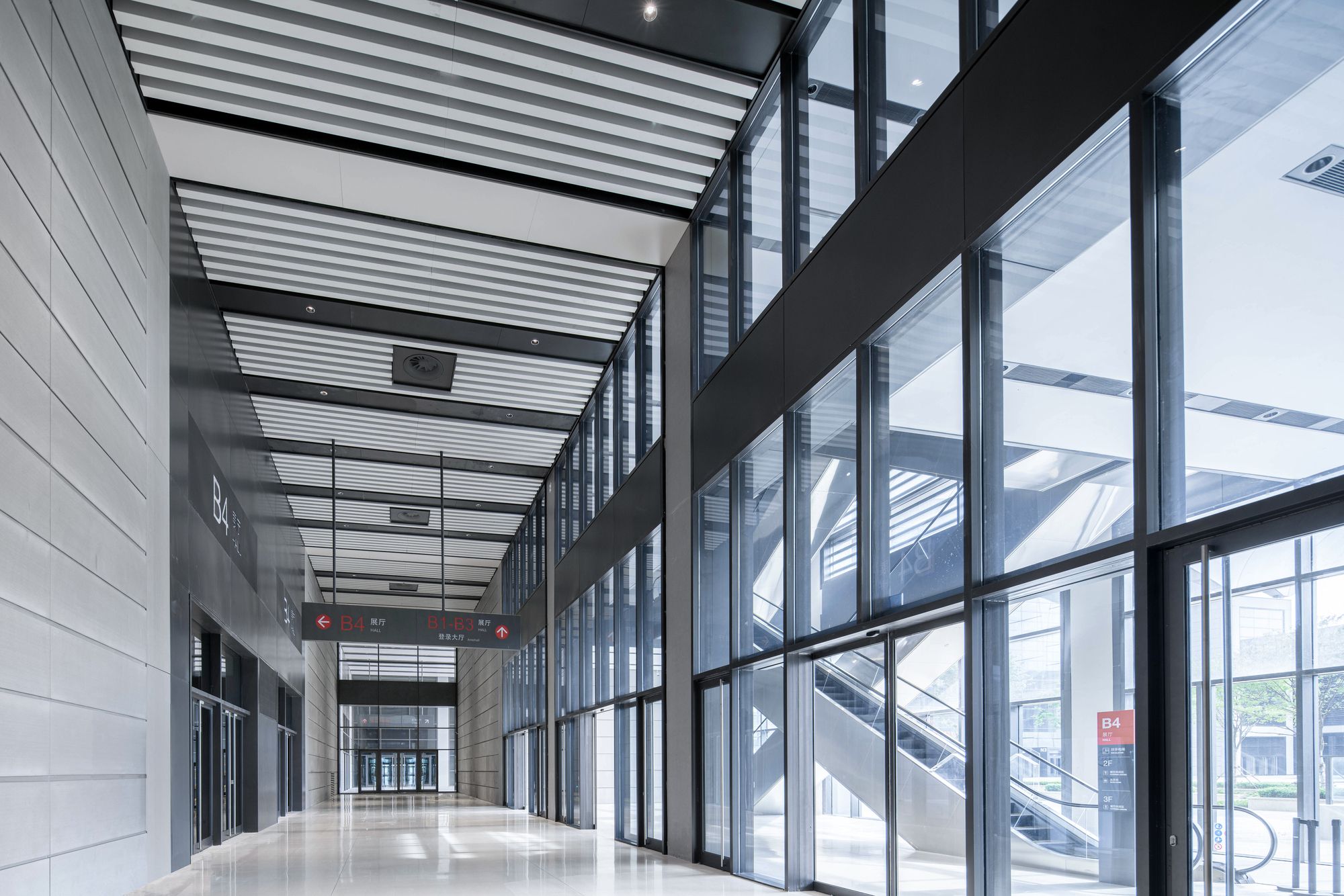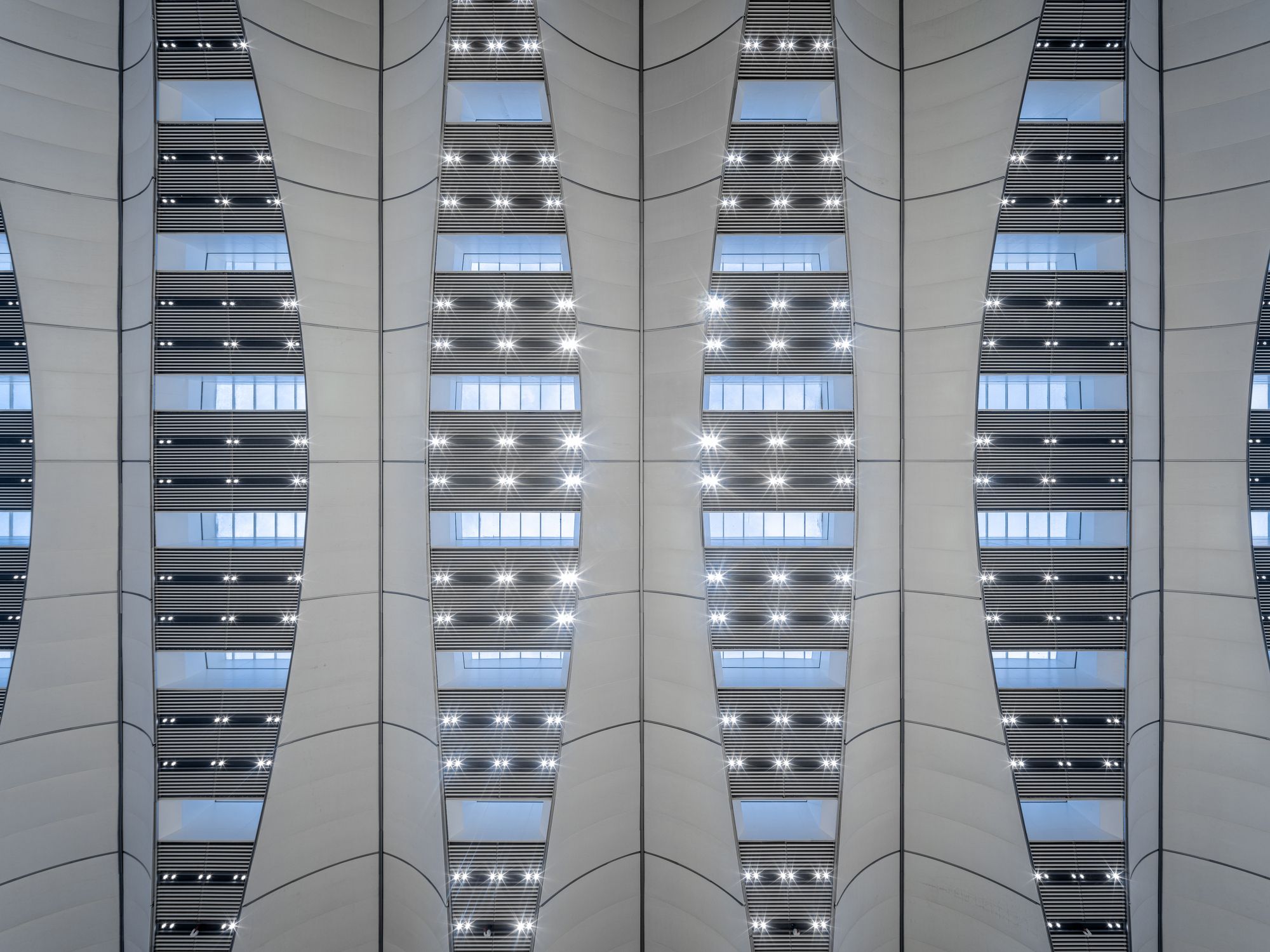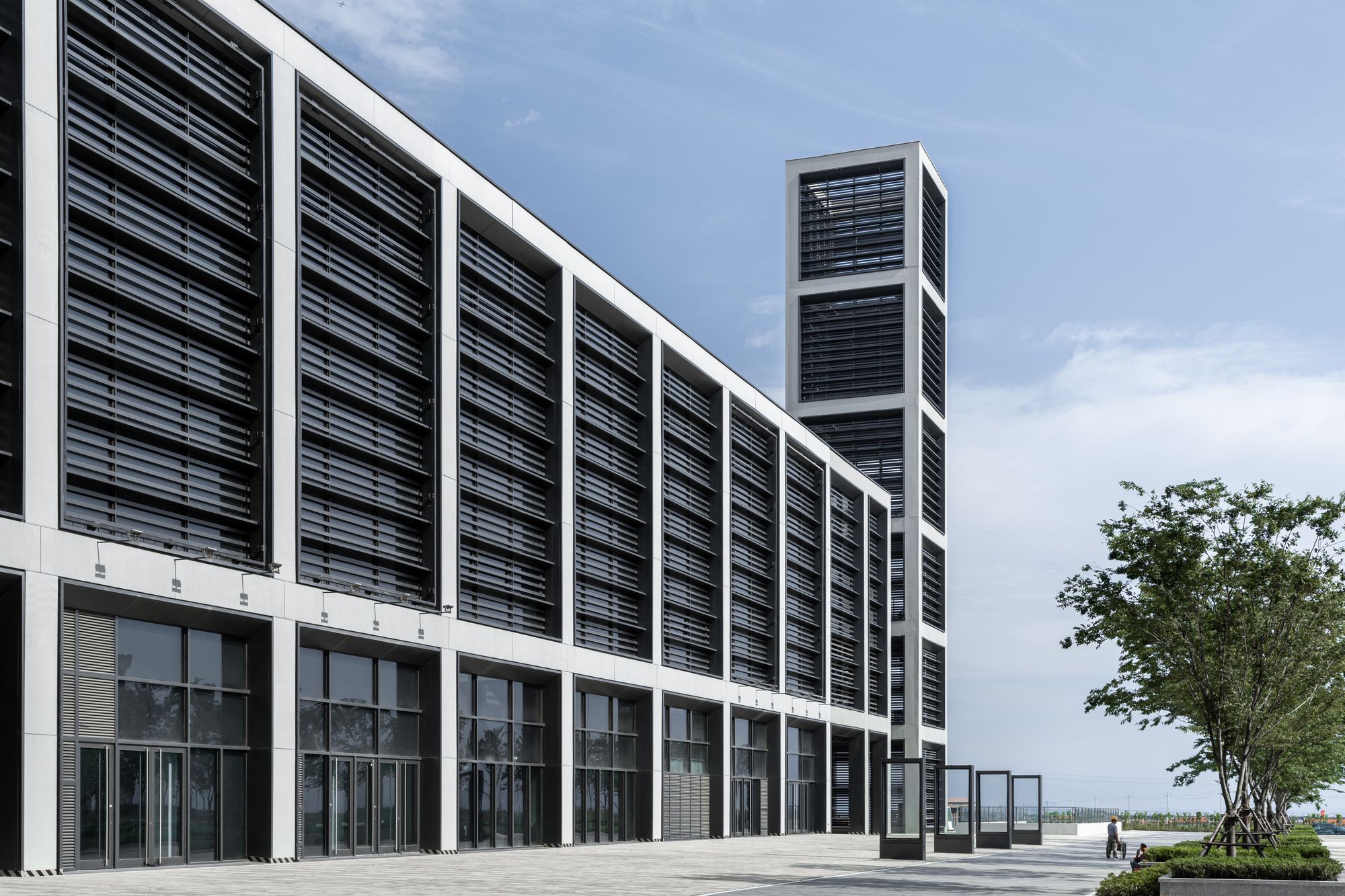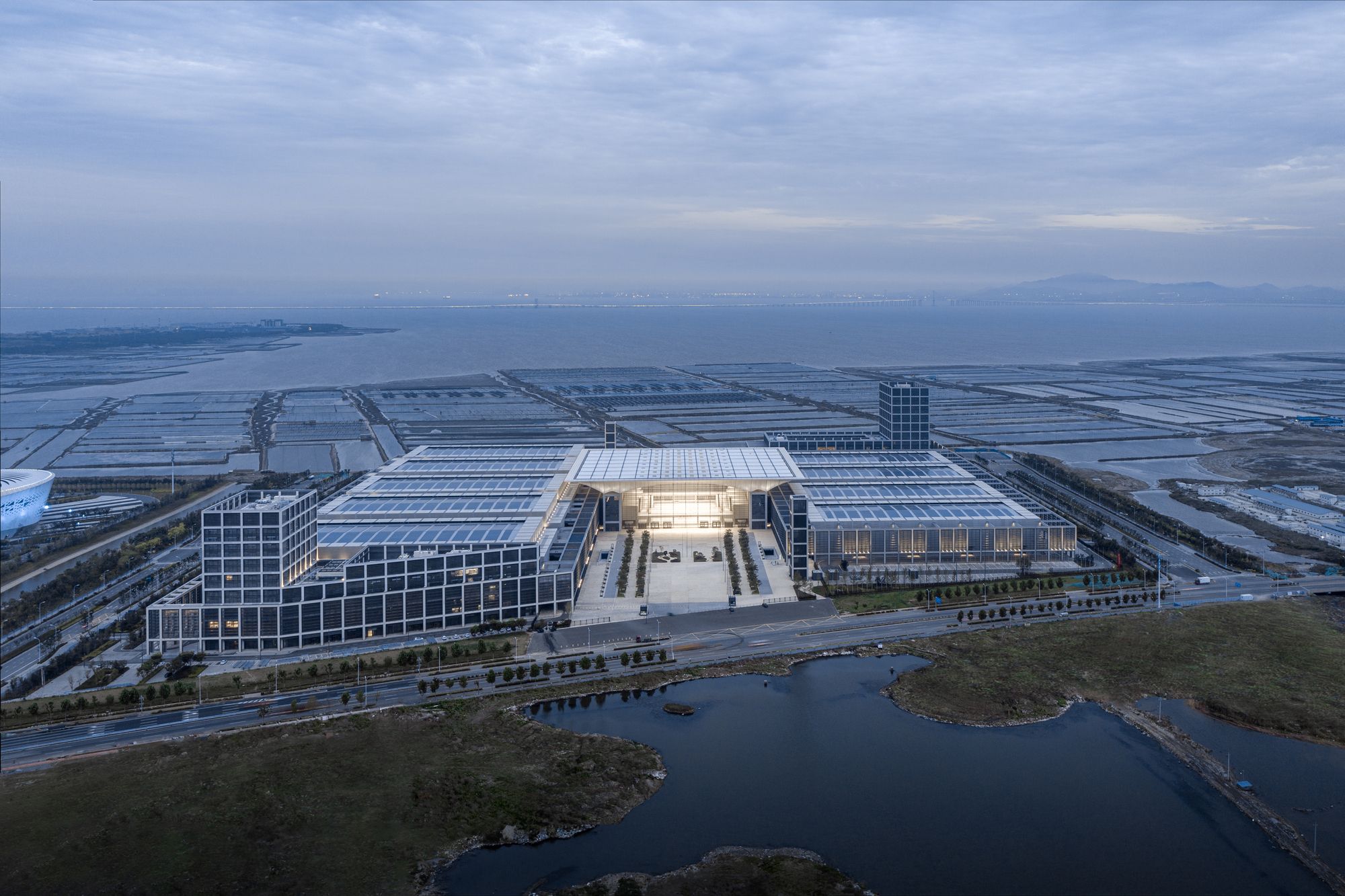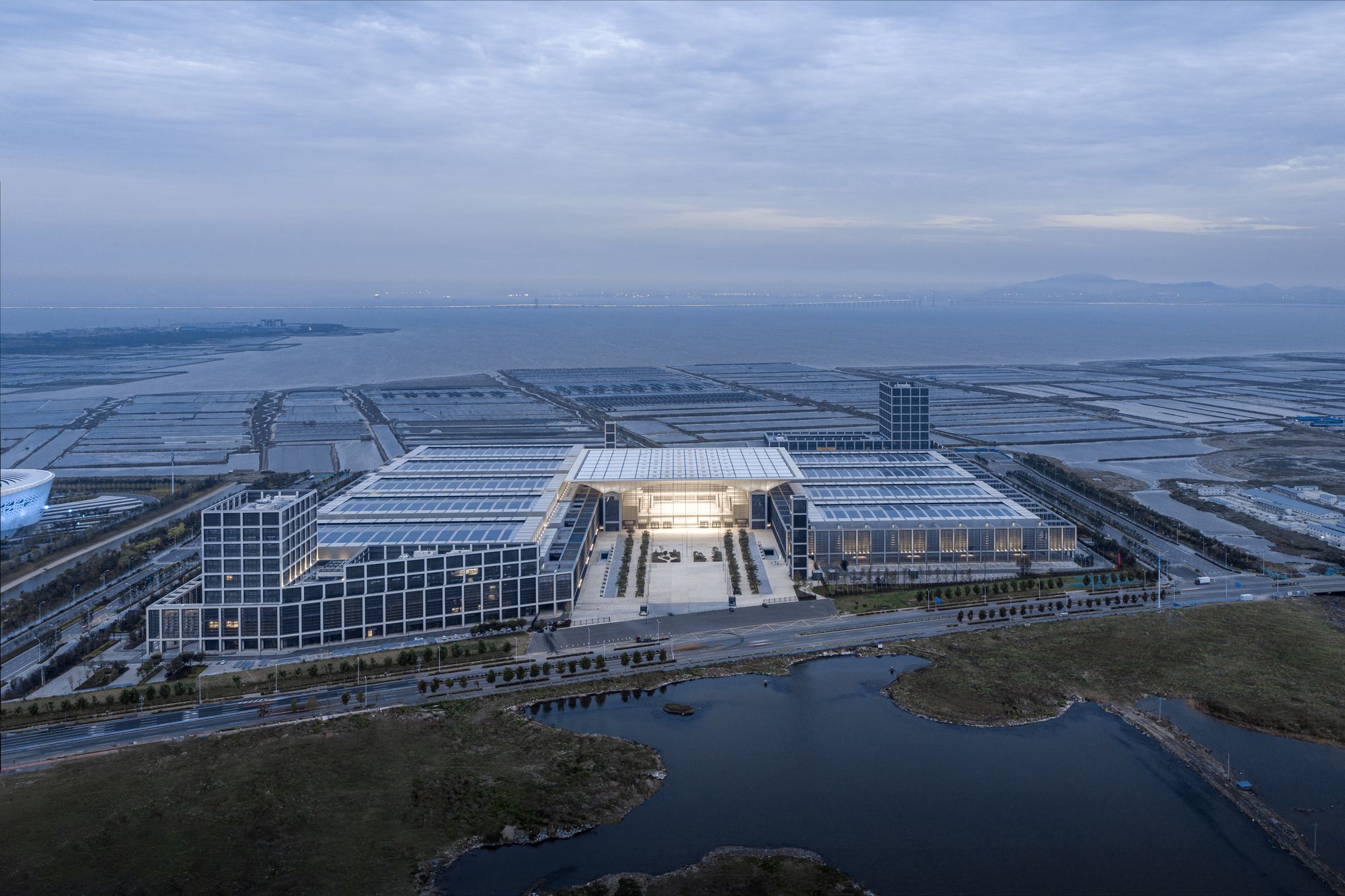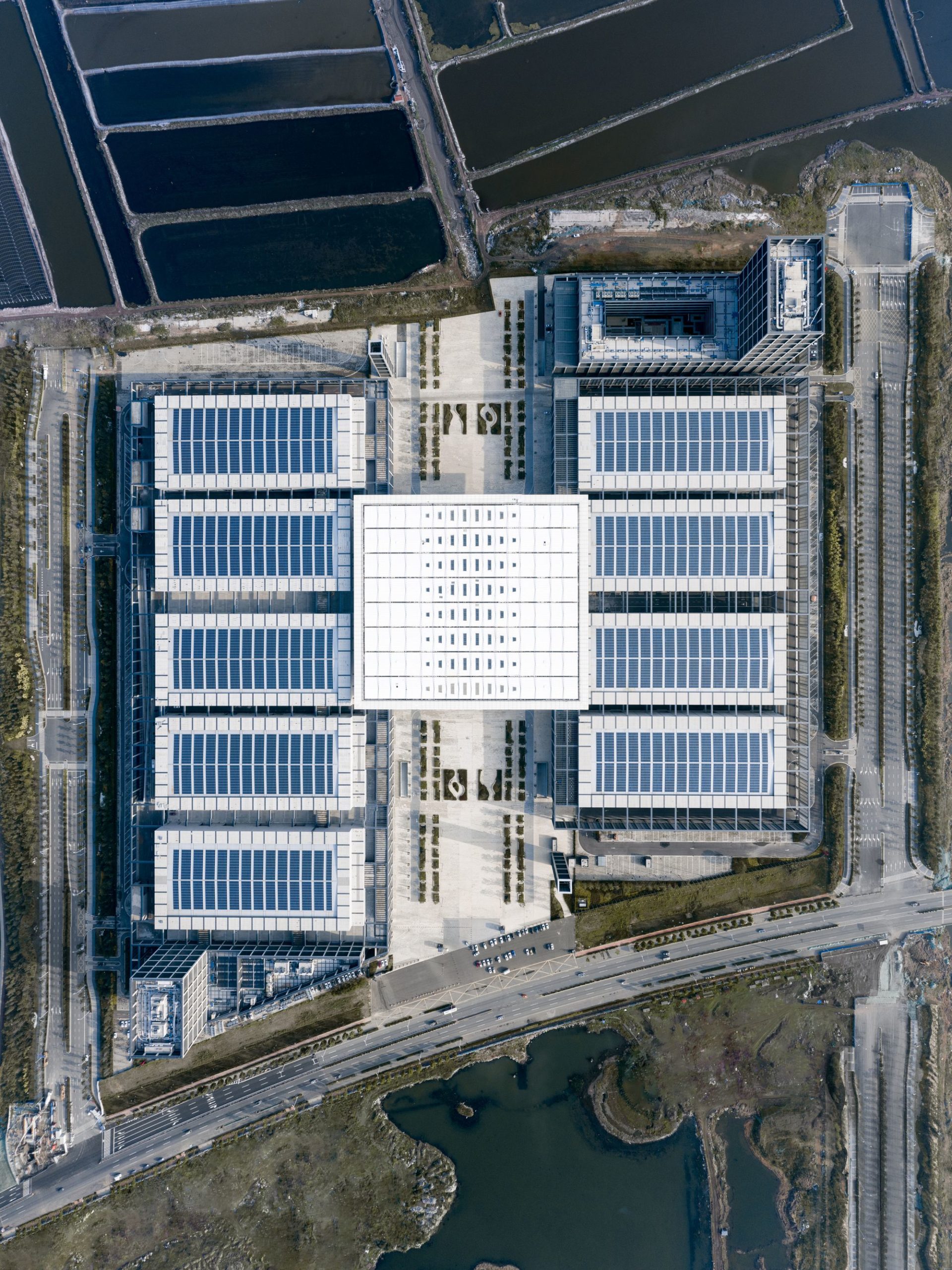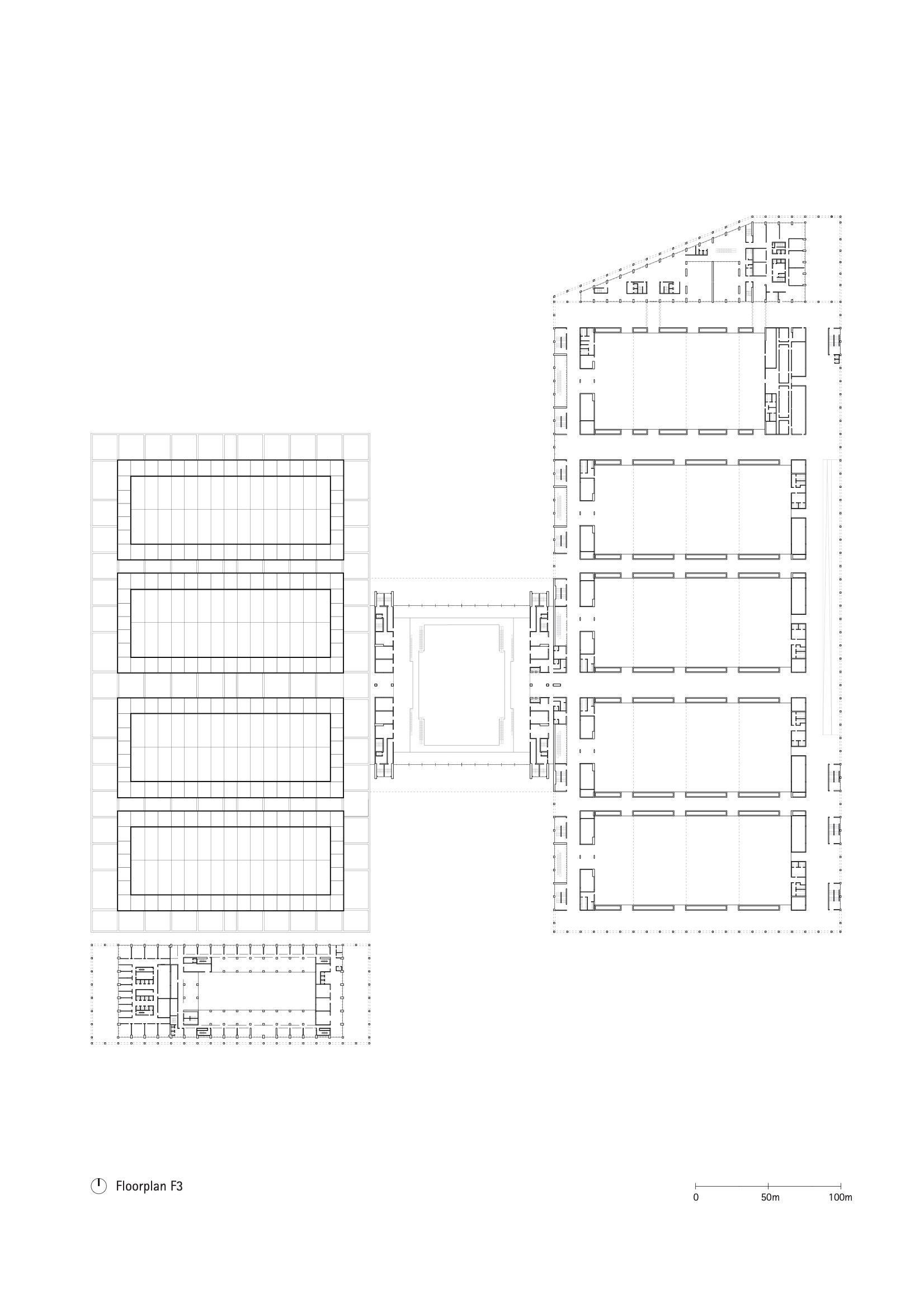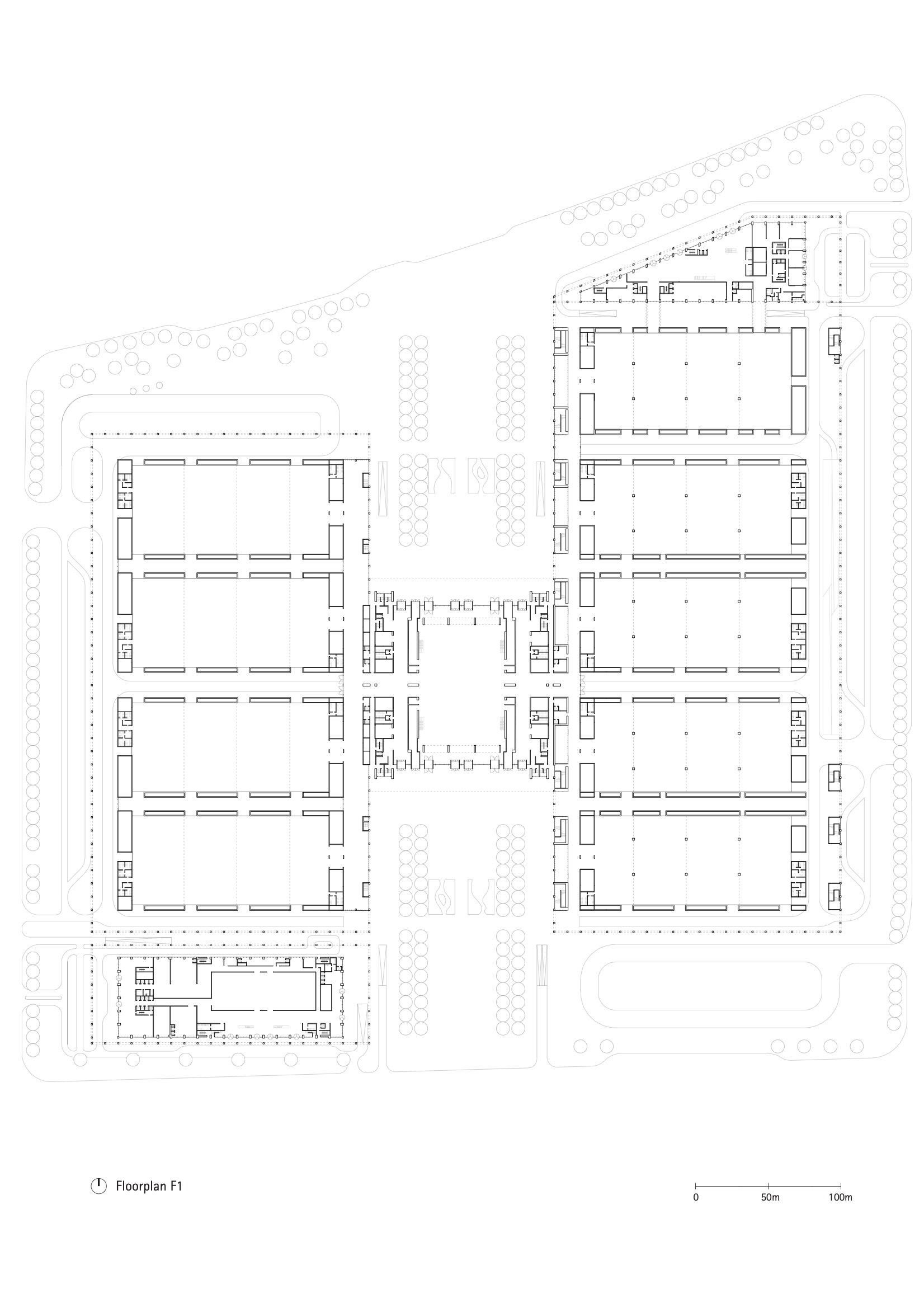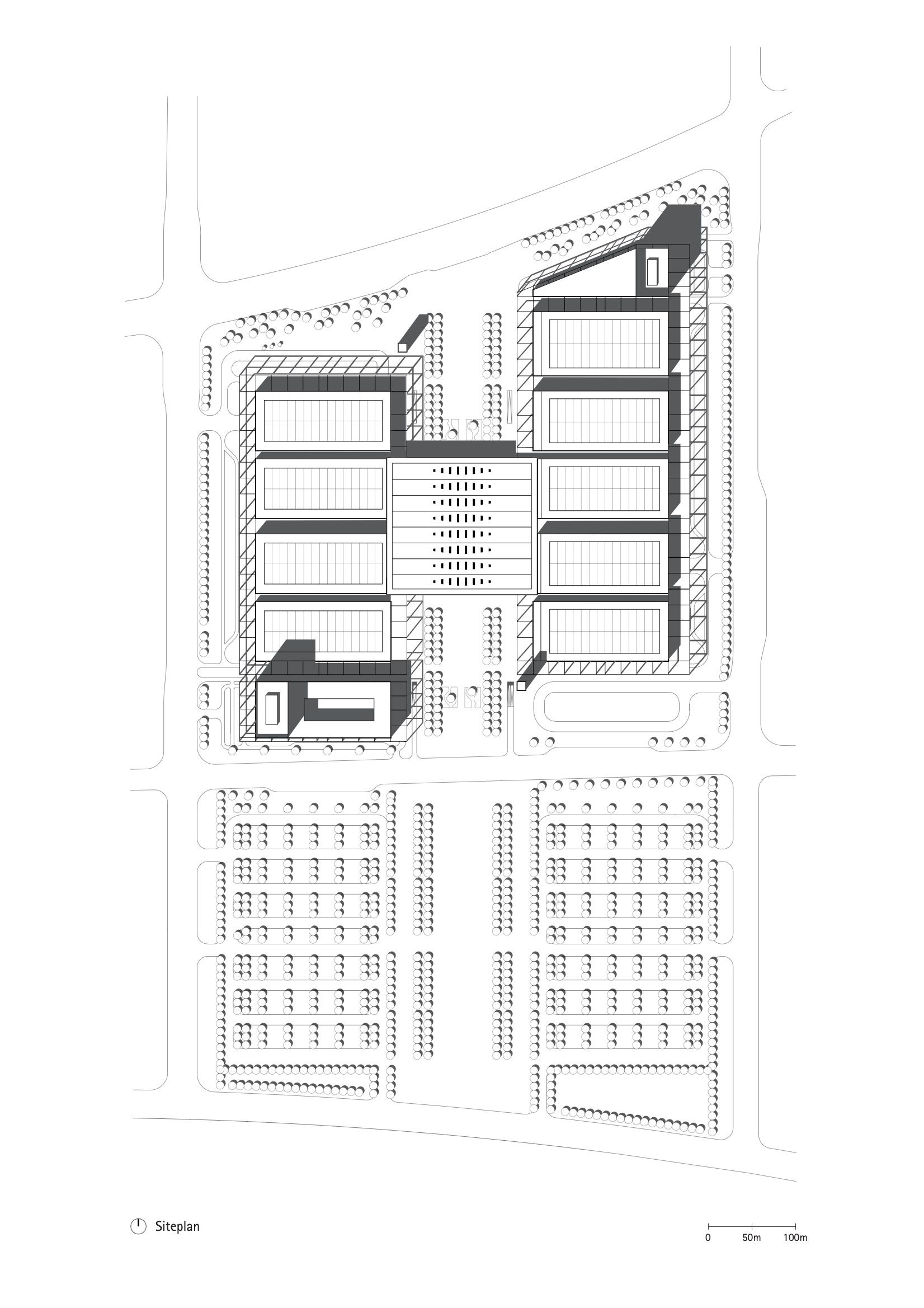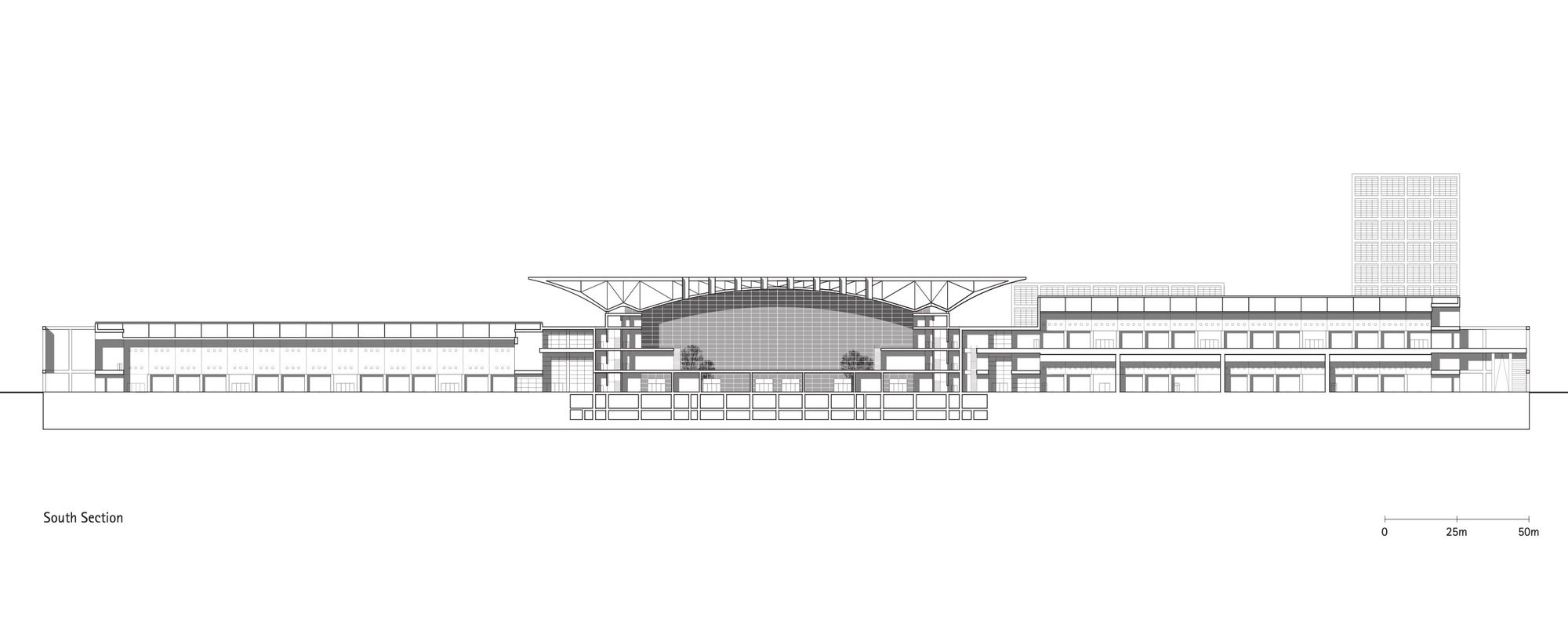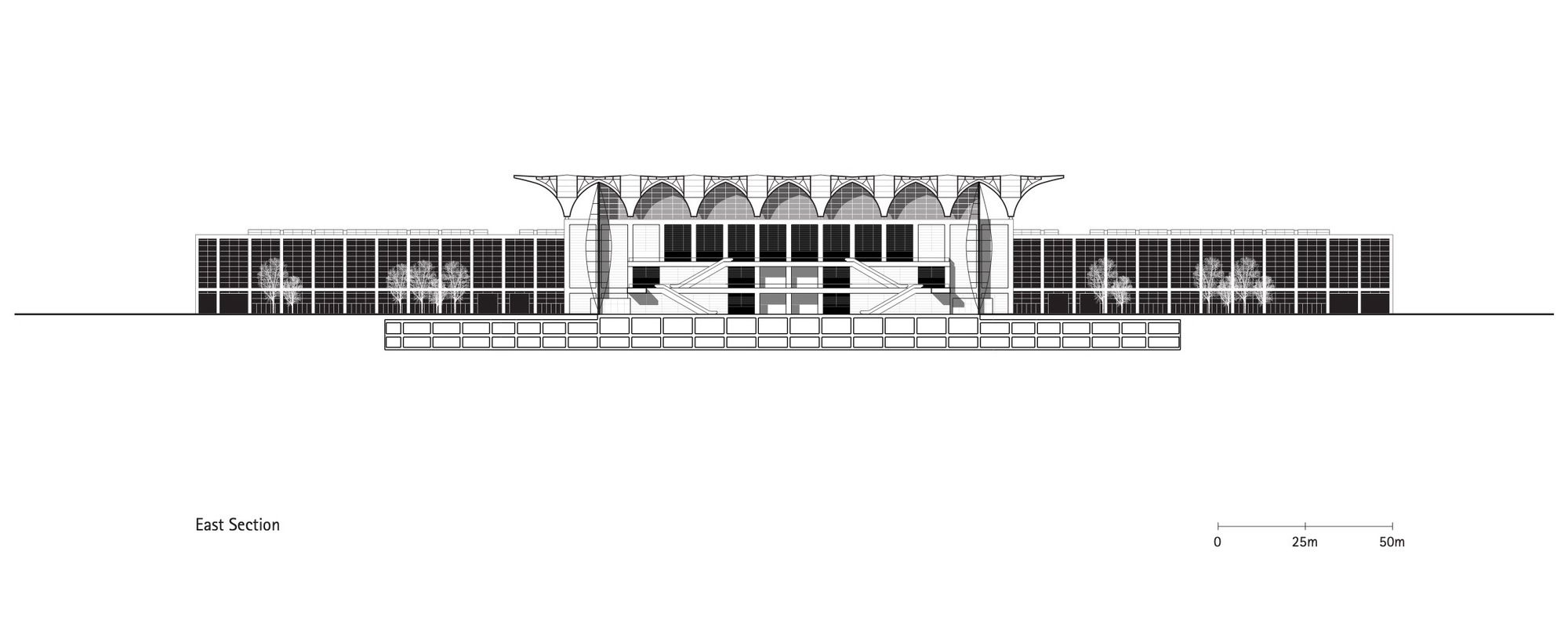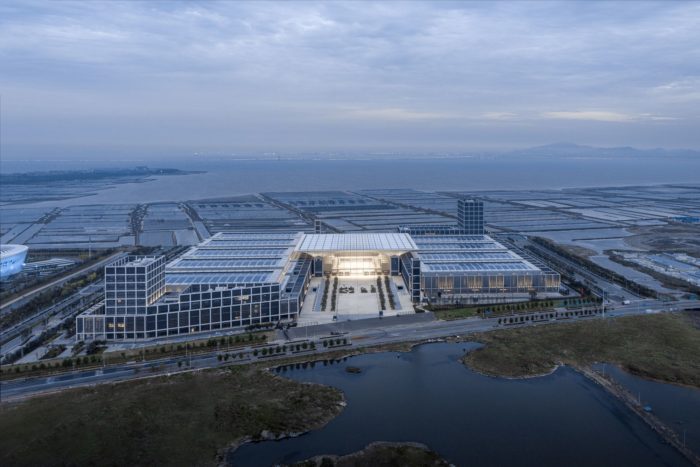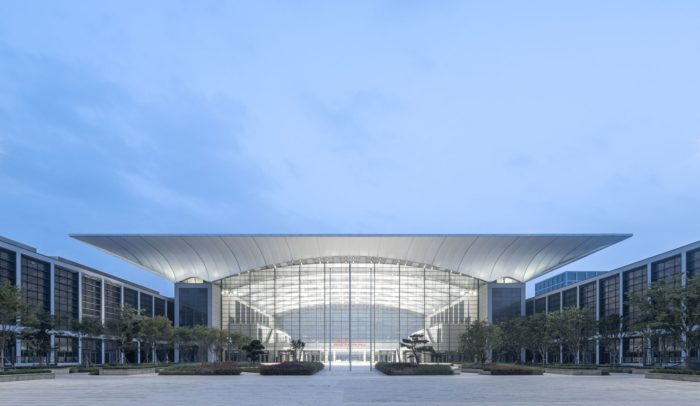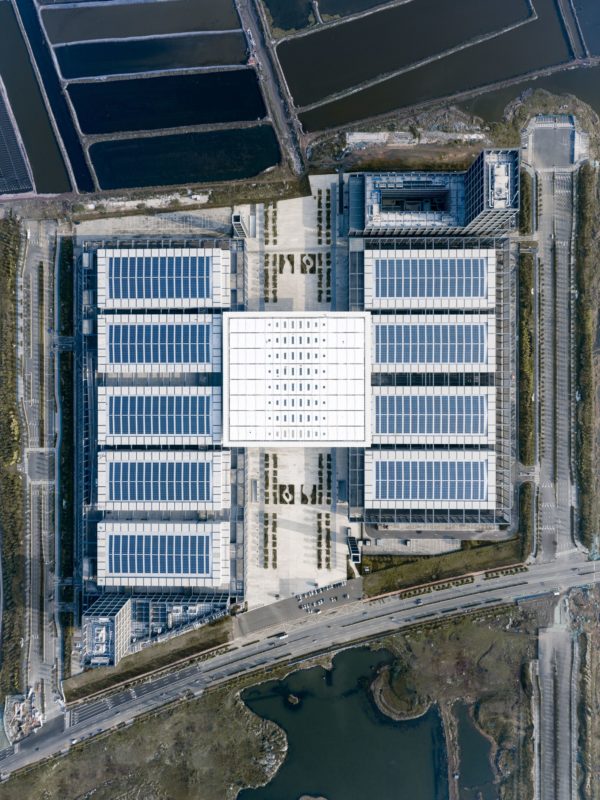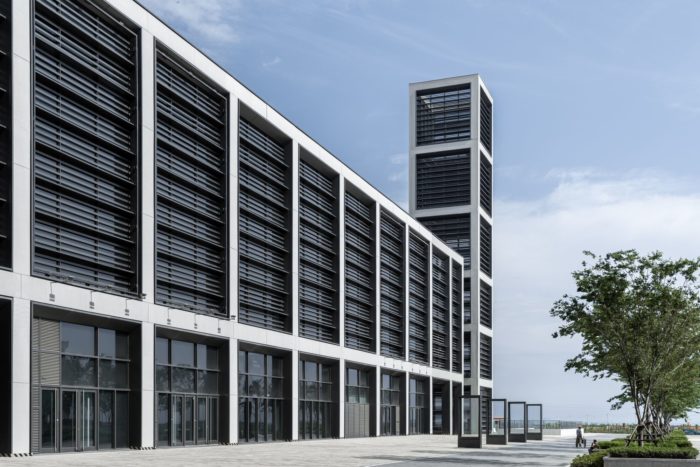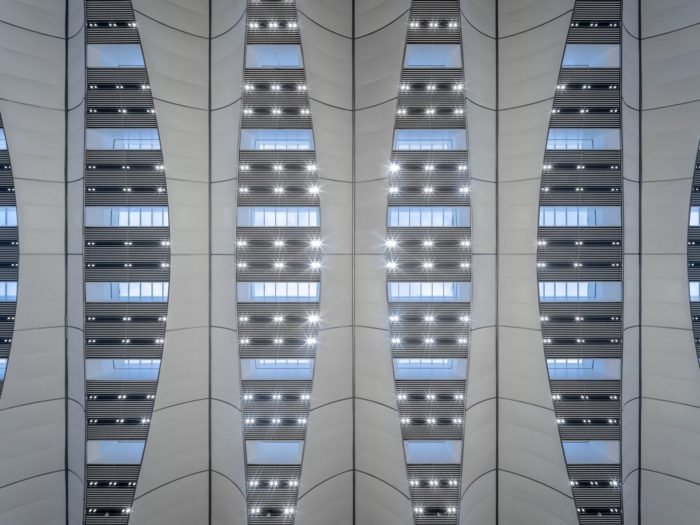The China Hongdao International Conference & Exhibition Center is one of China’s largest show complexes, with 14 halls and 140,000 m2 of exhibiting space. Its symmetrical layout planned by von Gerkan, Marg, and Partners (gmp) in the shape of an H connects the urbanity of the Hongdao area in the north with the coastal landscape of Jiaozhou Bay in the south. Its design and structure incorporate the logistically complicated show space into a single unit. The focus of the ensemble is the 40-meter-high entrance hall, which features a curving membrane roof with a 93-meter span.
Qingdao, in eastern China, is one of the most desirable cities. It is located on the shore of the Yellow Sea. Hongdao is being built as part of the growth around Jiaozhou Bay in order to improve the metropolis economically as a convention hub and cultural city. The Hongdao International Conference & Exhibition Center (HICEC) is a significant component among the new institutions, which also include the Olympic Sports Center and the Science Museum, both built by gmp.
China Hongdao International Conference & Exhibition Center ‘s Design Concept
The Shuangji Highway, an essential transportation corridor to the airport and the center of Qingdao runs along the complex’s northern boundary. The HICEC faces a wetland landscape park to the south, which forms the transition to Jiaozhou Bay’s coastline. With its central entrance hall, these two counterpoles establish the area’s north-south axis, along both sides of which the exposition and convention buildings are placed. Their symmetrical placement provides a distinct framework to the larger complex, with a hotel tower at the northeast corner and an office tower at the southwest corner.
The entrance hall’s totally glass ends and the light-colored, wave-shaped membrane roof accentuate the visual and spatial connectivity between the city and landscape. The lighted membrane ensures that the HICEC may be seen from a distance at night. The main hall’s internal façade are lined with light-colored, horizontal glass-fiber-reinforced cement panels. This pattern is reproduced in the shape of extruded concrete panels on the outer façade of the show halls. The exhibition buildings and the two towers are linked by a projecting, fair-faced concrete frame structure. Horizontal aluminum louvers used to fill in the panels give visual protection from delivery traffic as well as a backdrop for displaying images and advertising using a variety of media.
The tight design of the exhibition halls and the entrance hall generates huge open spaces to the north and south that can also be used for open-air exhibitions. The central axis of the park is enhanced with rows of trees on each side and planted seating places. In contrast to large-scale exhibition rooms, they provide visitors with additional outside area to linger.
The HICEC comprises 14 halls, each with approximately 10,000 m2 of exhibition space. The west wing is made up of four single-story halls, while the east wing is made up of five two-story bays, each having a hall on each story. The column-free halls of the west wing, in particular, provide maximum flexibility for the exhibition of major exhibits, with a room height of 18 meters. The exhibition halls, which have a functional and inconspicuous design, can be accessible from the central entrance hall on the first floor or by galleries. Visitor paths are always kept separate from delivery and logistics zones. Making it easier to schedule, put up, and deconstruct different events concurrently. Delivery traffic rotates clockwise around the exhibition site, with central security gates in the northwest and southeast. Dead-end pathways between the halls, which are hidden from visitors, also allow deliveries to the halls along their longitudinal sides. Vehicles can enter the top-story halls via ramps on the east side.
Project Info:
Area: 48800 m²
Year: 2020
Photographs: CreatAR Images
Design : Meinhard von Gerkan and Stephan Schütz with Nicolas Pomränke
Competition Lead : Patrick Pfleiderer, Stefan Hornscheidt
Competition Team: Jan-Peter Deml, Christian Machnacki, He Fan, Xie Li, Xie Fang
Project Lead Detailed Design: Patrick Pfleiderer
Deputy Project Lead Detailed Design: Stefan Hornscheidt, Xie Li
Detailed Design Team: Marta Busnelli, Jan-Peter Deml, Reibun Funaki, Christa Hillebrand, Christian Machnacki, Andreas Maue, Thomas Munke, Jens Standke, Tang Zihong, Matthias Wiegelmann, Zhang Chi, Zhang Qiyi, Joanna Zielinska, Thilo Zehme, Zhao Yihui
Project Management In China: Li Ling, Zhu Lei
Partner Practice In China: China Academy of Building Research
Structural Engineering: schlaich bergermann und partner sbp, Stuttgart/Shanghai
Facade Design: DS-Plan, Stuttgart/Shanghai
Landscape Architecture: WES, Berlin
Lighting Design: Schlotfeldt Licht, Hamburg/Berlin
Client: Qingdao Conson Hongdao International Conference and Exhibition Center Co., Ltd.
City: Qingdao
